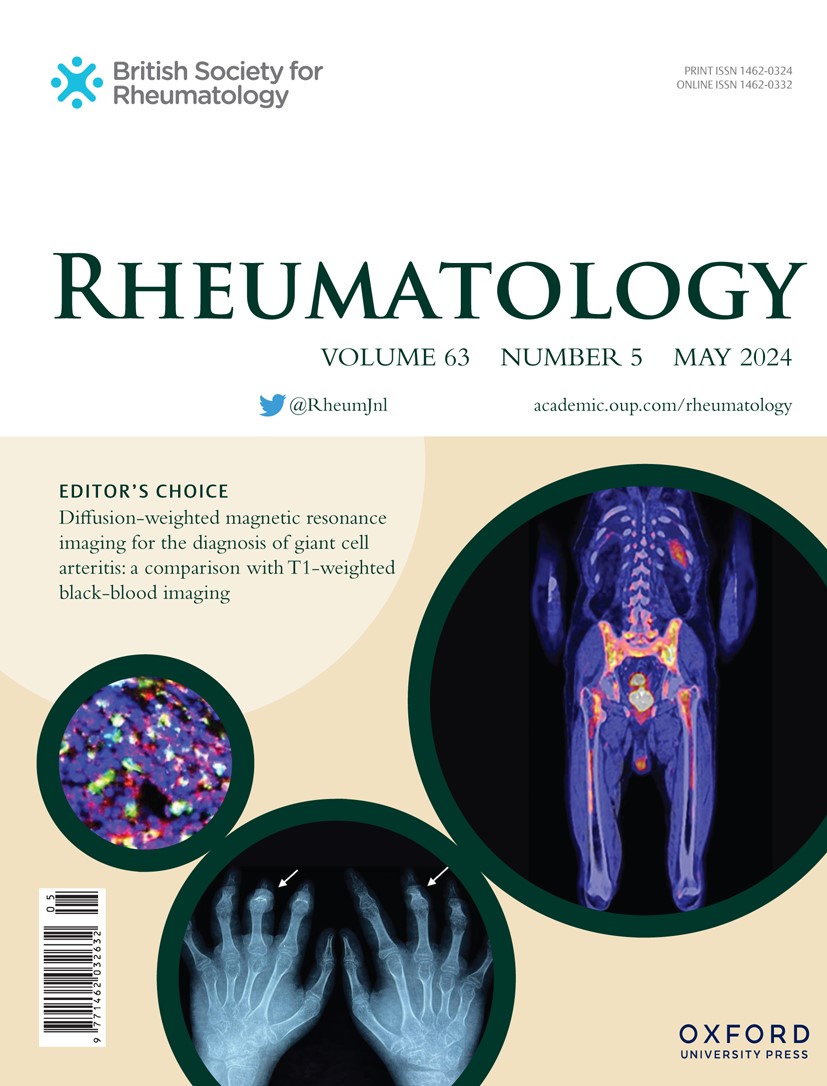A case-control study on autoimmune polyendocrine syndromes in patients with systemic lupus erythematosus
IF 4.7
2区 医学
Q1 RHEUMATOLOGY
引用次数: 0
Abstract
Objectives This study aimed to investigate the prevalence of Autoimmune Polyendocrine Syndromes (APS) in patients with Systemic Lupus Erythematosus (SLE) and to assess whether APS predicts higher disease activity or worse outcomes. Methods Clinical charts of 417 SLE patients, meeting SLICC 2012 and/or EULAR/ACR 2019 criteria, referring to our Centre between 2021 and 2023 were analysed. APS cases were identified using ORPHA definitions; 185 APS-free SLE patients, randomly enrolled, served as controls. Demographic, clinical and serological data were collected. Results Forty-seven of 417 (11%) SLE patients had another autoimmune disease affecting the glands that allows the diagnosis of APS: 39 were diagnosed with Hashimoto thyroiditis, 6 with Graves’ disease, and 3 with type 1 diabetes mellitus. Forty-five were affected by APS type 3, and 2 by APS type 4; no patients were diagnosed with APS 1 or 2. The comparison between APS+ and APS- patients revealed no significant differences in clinical or serological features. At the last evaluation, ∼80% of both groups’ patients were in clinical remission and approximately half of the patients remained on steroid therapy. APS+ patients had a slightly higher median damage index (SLICC-SDI), although this was not associated with increased disease activity. Conclusion The prevalence of APS among SLE patients is significantly higher than in the general population (11% vs 0,005%), confirming the association between autoimmune thyroiditis and SLE. However, APS+ patients do not appear to have a more aggressive disease or develop more complications.系统性红斑狼疮患者自身免疫性多内分泌综合征的病例对照研究
本研究旨在调查自身免疫性多内分泌综合征(APS)在系统性红斑狼疮(SLE)患者中的患病率,并评估APS是否预示着更高的疾病活动性或更差的预后。方法分析我院2021 - 2023年417例符合SLICC 2012和/或EULAR/ACR 2019标准的SLE患者的临床资料。APS病例采用orpa定义进行鉴定;随机招募185例无aps的SLE患者作为对照。收集了人口学、临床和血清学资料。结果417例SLE患者中47例(11%)存在可诊断为APS的其他自身免疫性疾病,其中39例诊断为桥本甲状腺炎,6例诊断为Graves病,3例诊断为1型糖尿病。APS 3型45例,APS 4型2例;没有患者被诊断为APS 1或2。APS+和APS-患者的临床和血清学特征比较无显著差异。在最后一次评估时,两组患者中约80%的患者处于临床缓解状态,约一半的患者仍在接受类固醇治疗。APS+患者的中位损伤指数(SLICC-SDI)略高,尽管这与疾病活动性增加无关。结论SLE患者APS患病率明显高于普通人群(11% vs 0.005%),证实自身免疫性甲状腺炎与SLE之间存在关联。然而,APS+患者似乎没有更严重的疾病或出现更多的并发症。
本文章由计算机程序翻译,如有差异,请以英文原文为准。
求助全文
约1分钟内获得全文
求助全文
来源期刊

Rheumatology
医学-风湿病学
CiteScore
9.40
自引率
7.30%
发文量
1091
审稿时长
2 months
期刊介绍:
Rheumatology strives to support research and discovery by publishing the highest quality original scientific papers with a focus on basic, clinical and translational research. The journal’s subject areas cover a wide range of paediatric and adult rheumatological conditions from an international perspective. It is an official journal of the British Society for Rheumatology, published by Oxford University Press.
Rheumatology publishes original articles, reviews, editorials, guidelines, concise reports, meta-analyses, original case reports, clinical vignettes, letters and matters arising from published material. The journal takes pride in serving the global rheumatology community, with a focus on high societal impact in the form of podcasts, videos and extended social media presence, and utilizing metrics such as Altmetric. Keep up to date by following the journal on Twitter @RheumJnl.
 求助内容:
求助内容: 应助结果提醒方式:
应助结果提醒方式:


